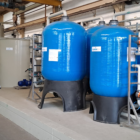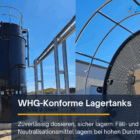Coagulants are essential chemical compounds in water and wastewater treatment that are used for coagulation and floc formation. They neutralize the electrical charge of the fine, mostly colloidal particles in the water so that these particles can clump together and form flocs. This makes it much easier to separate solids, organic impurities and heavy metals. Coagulantsare used in various industries such as the paper and pulp industry, metal processing, the food industry and in municipal wastewater management.
Table of contents
Technical background of the coagulants
Colloidal particles in wastewater usually have a negative surface charge, which causes the particles to naturally repel each other and thus form a stable suspension in the water. Coagulants neutralize these charges so that the particles are destabilized and aggregated through floc formation. The effectiveness of coagulants depends on various factors, including the type and charge density of the coagulant, the pH value and the temperature of the wastewater.
Coagulants can be divided into two main groups:
Metal-based coagulants: These compounds release positively charged metal ions during hydrolysis, which act as charge carriers and attract the particles in the wastewater. The most common metal coagulants are aluminum sulfate, ferric chloride and polyaluminum chloride (PAC).
Organic coagulants: These compounds contain organic molecules with a positive charge, which also contribute to the destabilization of colloidal particles. Organic coagulants are often used in combination with metal-based agents and offer the advantage that they produce a smaller amount of sludge.
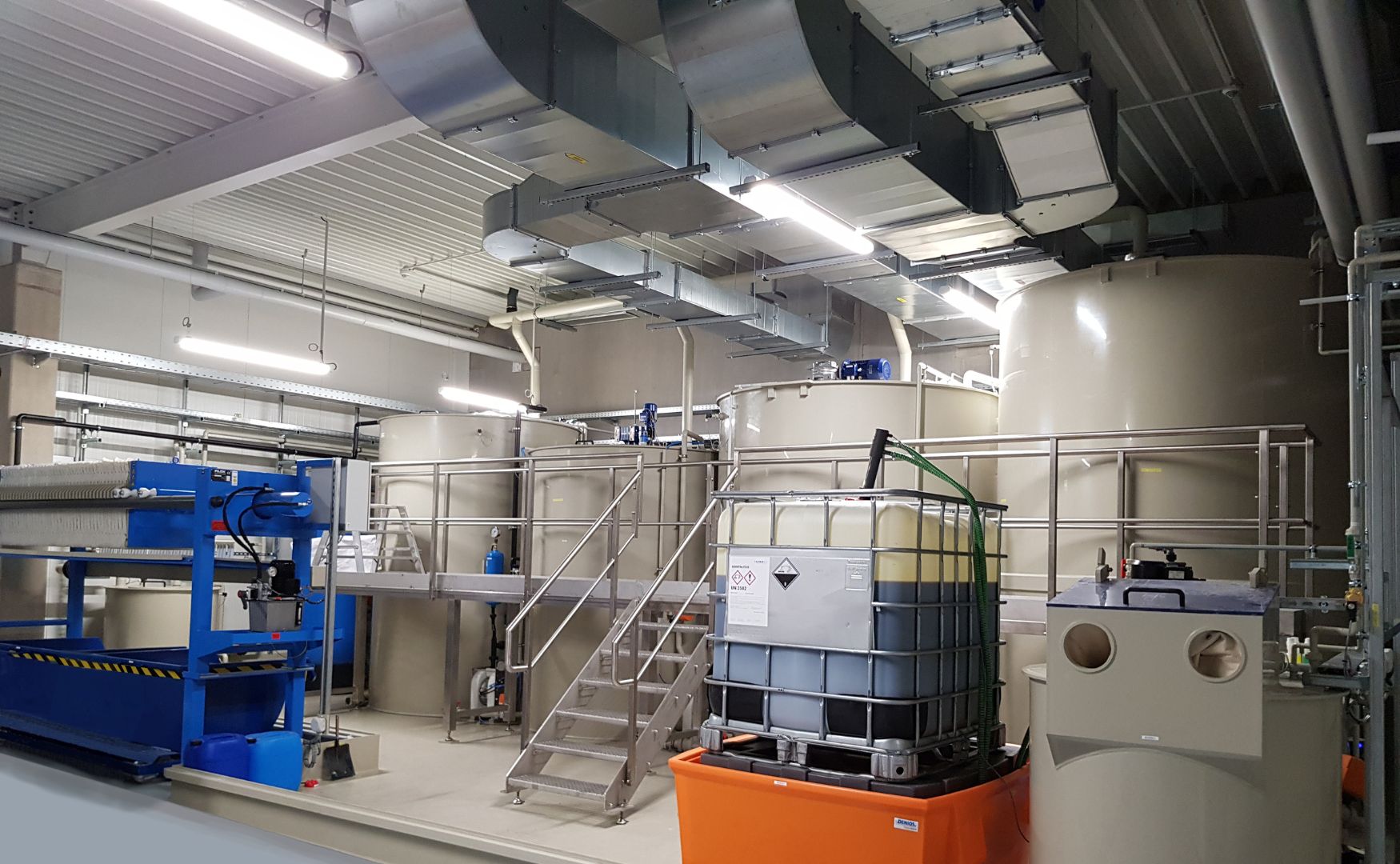
Photo: CP plant (precipitation and flocculation plant) ALMA Chem MCW for coagulation and elimination of pollutants
Types and function of coagulants
1. aluminum sulfate (Al₂(SO₄)₃)
- How it works: Aluminum sulfate is a frequently used coagulant that releases aluminum ions (Al³⁺) when added to water. These ions bind to negatively charged particles and neutralize their charge. The aluminum ion also forms poorly soluble aluminum hydroxide [Al(OH)₃] in water, which acts as a flocculant.
- Areas of application: Aluminum sulfate is frequently used in drinking water treatment and in industrial applications, especially for the removal of turbidity and organic impurities.
2. ferric chloride (FeCl₃) and ferrous sulphate (FeSO₄)
- How it works: These iron compounds release iron(III) ions during hydrolysis, which cause a strong floc formation. Ferric chloride reacts in water to form iron hydroxide, which has a high binding capacity for suspended solids and organic particles.
- Areas of application: Ferric chloride and ferrous sulphate are used particularly in waste water treatment to remove phosphates and heavy metals. These compounds are also widely used in the food industry and paper production.
3. polyaluminum chloride (PAC)
- How it works: PAC is an advanced coagulant that is already partially hydrolyzed and has a higher charge density than aluminum sulfate. The molecular structure of PAC enables faster floc formation and improved solids separation at low dosages.
- Areas of application: PAC is used in municipal water treatment as well as in industrial applications such as the textile industry and paper processing, where high efficiency at low dosage is required.
4. organic coagulants (e.g. polyamines and polyquats)
- How they work: These polymers contain positively charged functional groups that bind to negatively charged particles in the wastewater. They are particularly suitable for floc stabilization and as a supplement to metal-based coagulants.
- Areas of application: Organic coagulants are often used in combination with metal coagulants and offer advantages for flocculation in wastewater with a high organic content. They are used in the textile and leather industry as well as in metalworking.
Applications of coagulants in practice
- Drinking water treatment:
- In drinking water treatment, coagulation is used to remove suspended solids, organic matter and turbidity. Coagulants such as aluminum sulfate and PAC help to improve water quality by forming clear and stable flocs that can be easily separated.
- Industrial wastewater treatment:
- Coagulants are a key component of industrial wastewater treatment. They are used to remove heavy metals, phosphates and organic compounds. In the metalworking and electroplating industry, for example, iron and aluminum coagulants are used to precipitate heavy metals and remove them from the water.
- Pulp and paper industry:
- The paper industry produces wastewater with a high organic load and solids content. Coagulants are used here to remove fibrous materials and reduce the COD load. The addition of PAC or ferric chloride improves the separation of solids and reduces the chemical oxygen demand in the wastewater.
- Food and beverage industry:
- This industry produces organically contaminated wastewater containing phosphates and fats. Coagulants such as aluminum sulfate and polyamines are used to remove these substances and improve wastewater quality. This enables compliance with wastewater limits and environmentally friendly disposal.
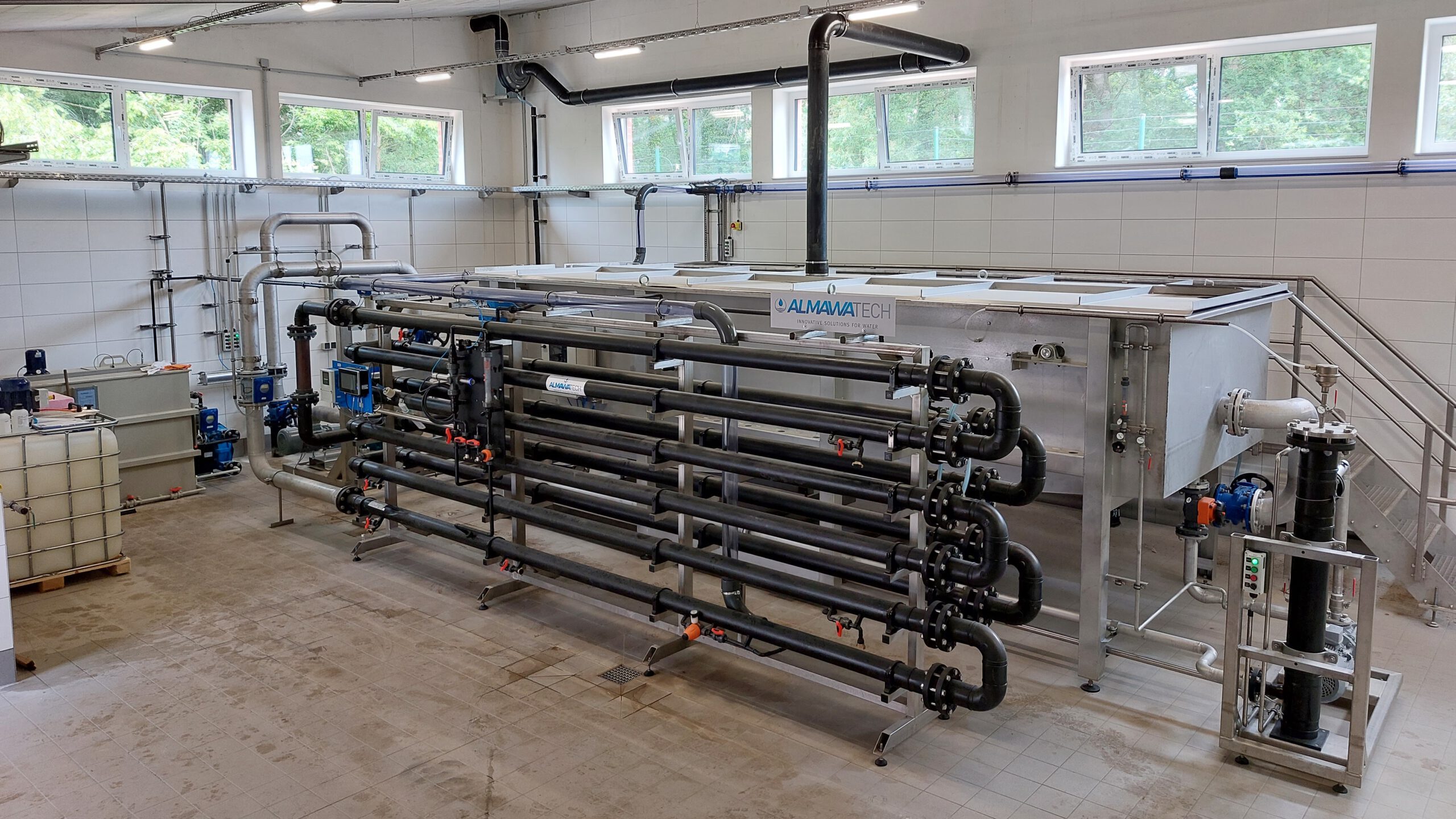
Photo: ALMA NeoDAF flotation system for coagulation and elimination of pollutants
Advantages and challenges of using coagulants
Advantages:
- High efficiency: Coagulants are very effective at removing turbidity, suspended solids and heavy metals.
- Versatility: The wide range of available coagulants means that customized solutions can be found for different types of wastewater.
- Cost reduction: Efficient coagulation reduces operating costs, as higher solids removal and better water quality are achieved.
Challenges:
- pH dependency: The effectiveness of many coagulants is strongly pH-dependent. A non-optimal pH value can reduce the effectiveness of coagulation, which is why precise pH adjustment is required.
- Corrosiveness: Some coagulants, such as ferric chloride, are corrosive and require special storage and dosing systems.
- Sludge volume: The use of coagulants generates sludge that must be disposed of. This can lead to additional disposal costs.
Coagulation agent for ALMAWATECH: ALMA AQUA waste water
ALMAWATECH offers a wide range of coagulants in the product line ALMA AQUA Wastewaterproduct line, including aluminium sulphate, ferric chloride, PAC and other specialized coagulants. Our solutions are adapted to different applications and pH ranges and offer optimal solids separation and wastewater treatment. Through laboratory analyses and practical tests, we determine the most suitable coagulant and the optimum dosage for your specific requirements. With our customized solutions, our customers can reduce operating costs and achieve the highest standards of wastewater quality.
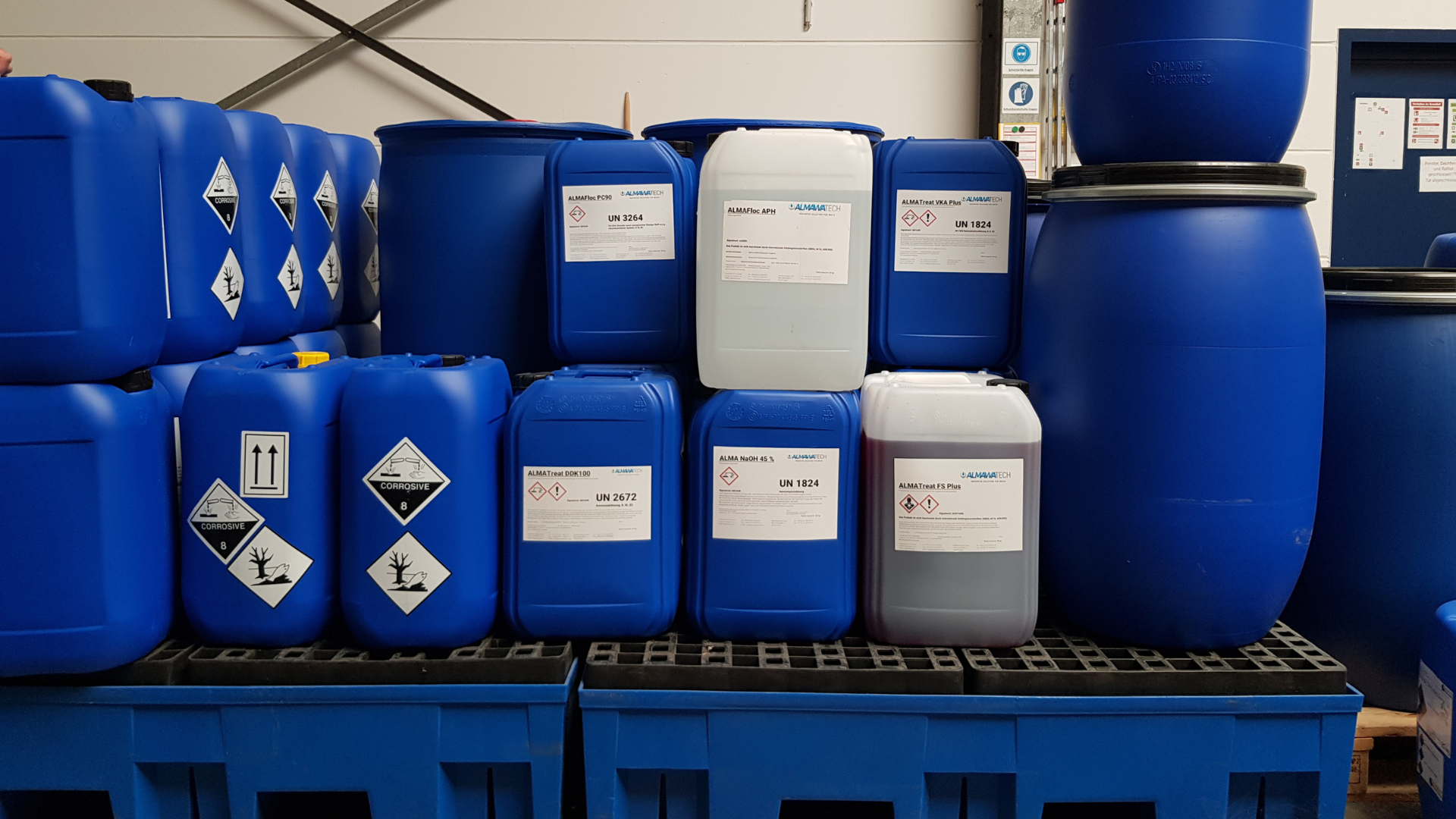
Photo: Application-specific operating resources ALMA AQUA wastewater: precipitants, flocculants, neutralizing agents and other products
Conclusion
Coagulants are indispensable in water and wastewater treatment and enable the efficient removal of solids and colloidal impurities. With a variety of metal and organic coagulants available, the coagulation process can be adapted to the specific requirements of different industries. ALMAWATECH offers a comprehensive line of coagulants, supported by laboratory analysis and consultation to ensure our customers receive the best possible solution for their wastewater treatment.
For further information on our products, please feel free to contact us at any time!


